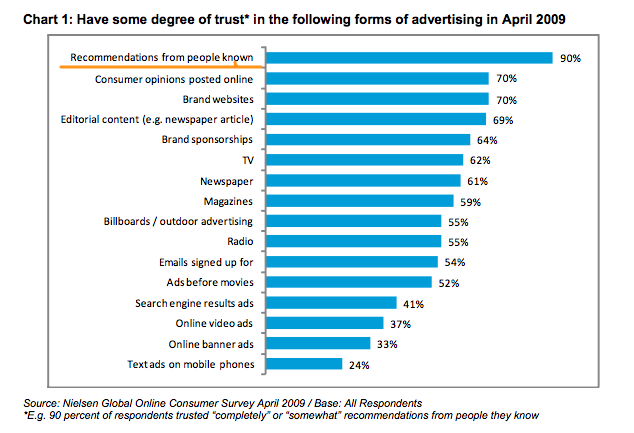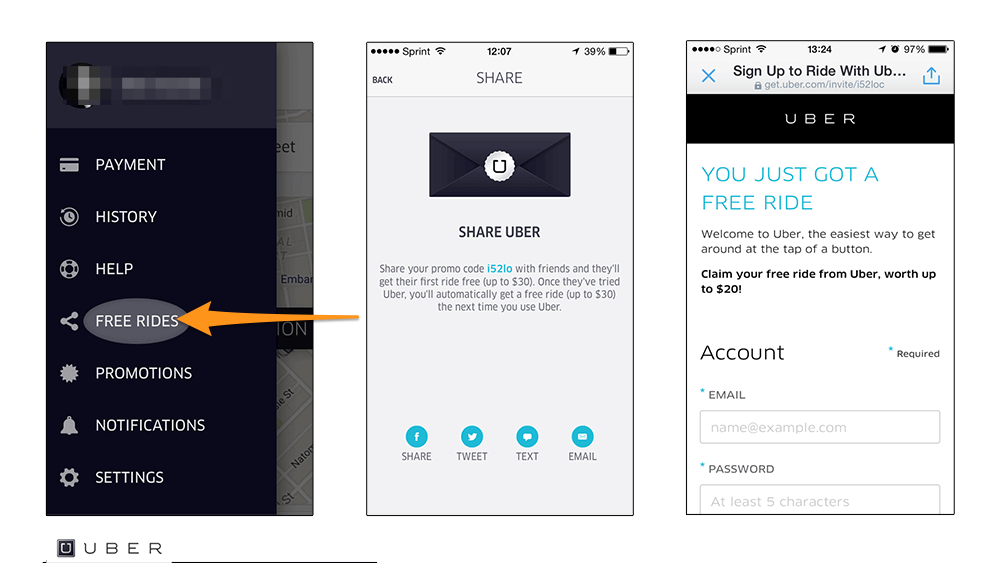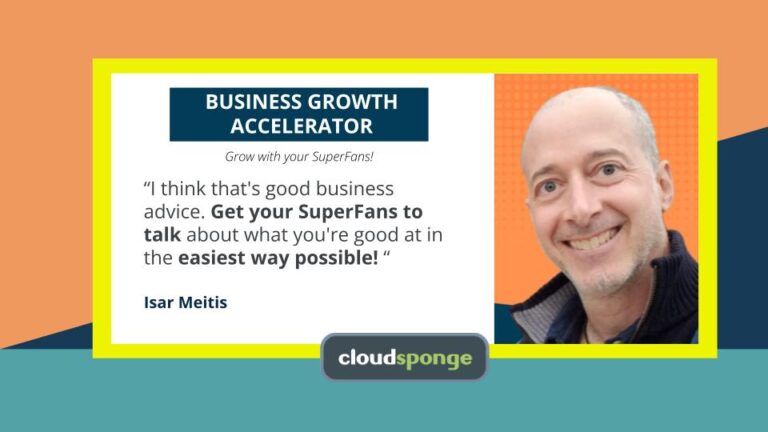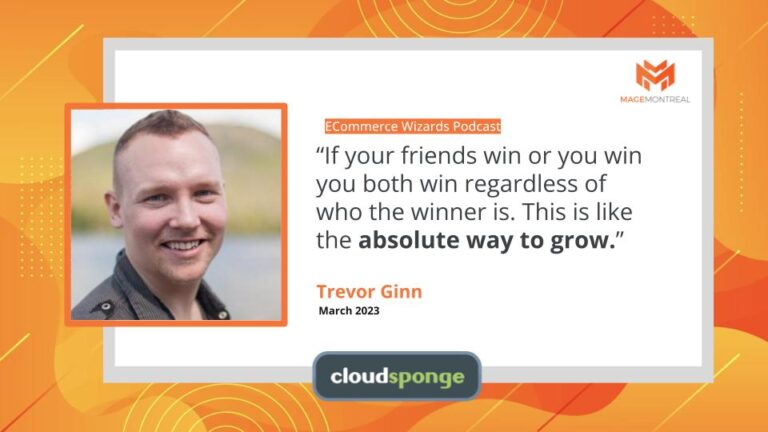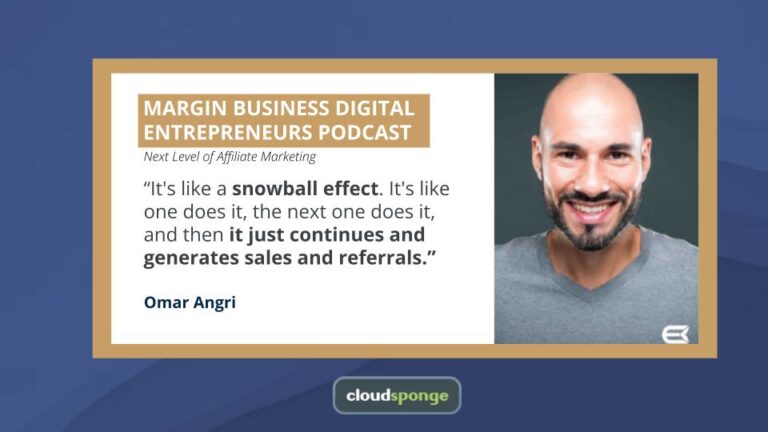Do you struggle to generate referrals while your competitor’s users seem unable to stop talking about their product?
Does seeing them boasting about it on social media and inviting friends to use the product leave you frustrated, irritated or mad as hell…
…particularly, as you’re battling the rising costs of using other marketing channels to achieve the same?
If so, then I have something you’re going to absolutely love – a complete overview of the referral-invite process and advice on launching a such program in your company.
But first, we need to get one thing out of the way:
Why Focus on the Word-of-Mouth and Referral-Invites in the First Place?
After all, marketing channels abound.
Search engines, email marketing, online review platforms and a whole range of different online advertising solutions could help you position your product in front of potential users and ignite growth.
The problem – so many of those channels require ridiculous budgets. Others, long-term commitment before they yield any measurable results.
Referrals, at the same time, help grow the user base almost in an instant.
Plus, there is no doubt about their effectiveness. Just consider these stats:
- 84% of consumers reported to always or sometimes take action because of a personal recommendation. (source)
- 43% of social media users admit having purchased a product after sharing it on social media. (source)
- And, as the data concludes, word-of-mouth improve marketing effectiveness by a staggering 54%. (source)
Impressive, right?
Other data sources report similar findings. Nielsen Group, for example, discovered that people are 4 times more likely to buy a product if they’ve learned about it from a friend. What’s more, such recommendations remain the most trusted form of advertising.
I admit some of the above data pertains to B2C specifically. But referrals and word-of-mouth work in B2B too.
Quite well, in fact.
According to Adaptive, 91% of B2B purchasers admit having been influenced in their buying decisions by referrals and recommendations.
What’s more, examples from companies like Koodo (75000 users in two years) or W Concept ($20000 in sales in the first month of running a referral-invite program) prove the effectiveness of the strategy further.
In the following section, you’ll learn how a program similar to their works. And then, we’ll discuss what you need to remember as you’re launching yours.
How Friend Referrals Work
Here’s the exact referral process your users and their connections go through.
(Note, for this walkthrough, I’m using one of CloudSponge’s client’s sites – The Hustle. Similar programs on other sites might look slightly differently or offer different sharing channels. Their overall principle, however, will be the same.)
Step 1. An engaged user, someone getting such incredible value from using your product that she’s willing to talk about it, notices your referral program.

Step 2. Given how useful it is to them, she decides to tell her network about it. She clicks on the program’s link, taking her to a relevant section of the site:
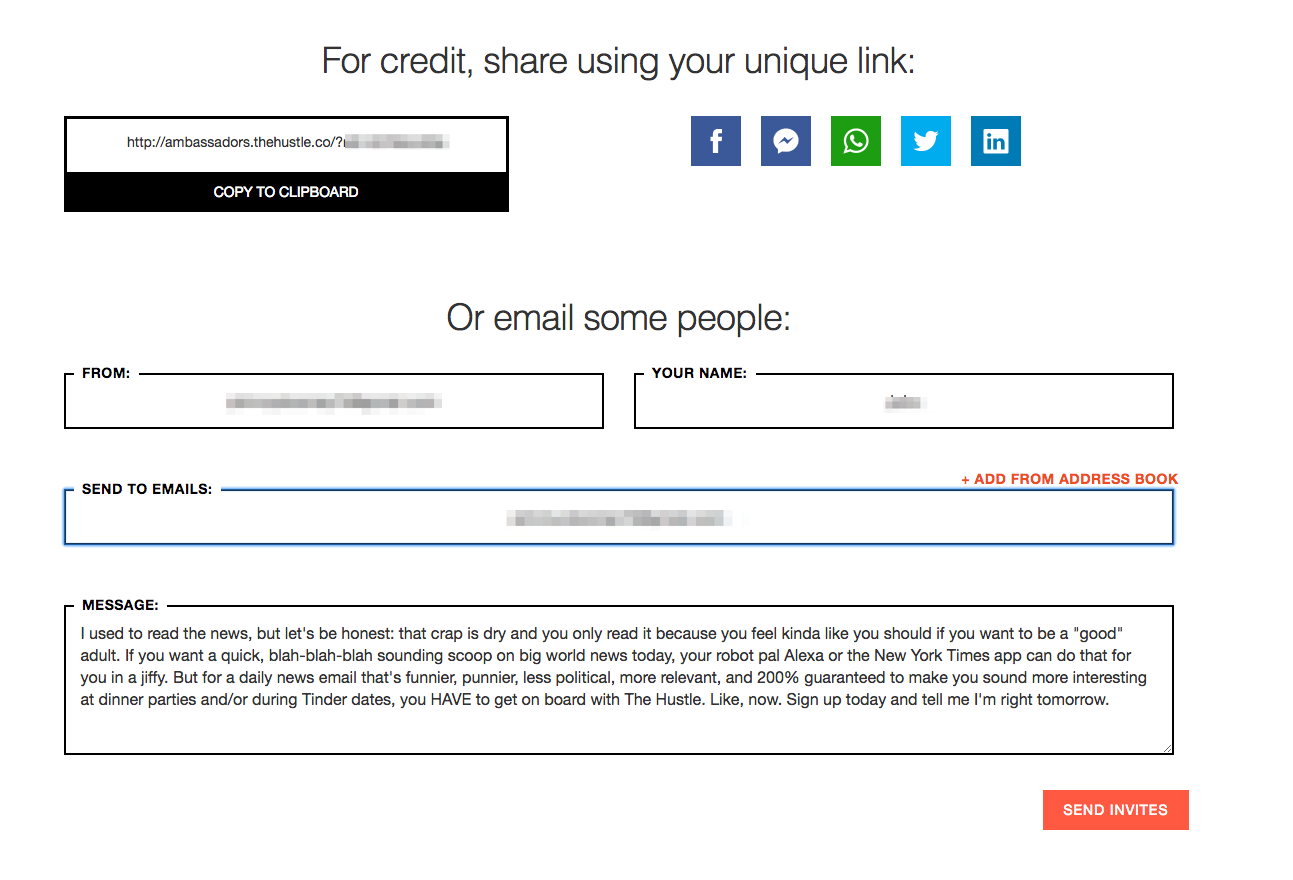
Step 3. She selects the most suitable channel to use.
The Hustle, for example, offers the whole range of sharing channels – social media, email, and personal link. Other companies focus on fewer channels, typically the ones their audience favors the most.
Here’s the pre-set message she can post to Twitter directly:
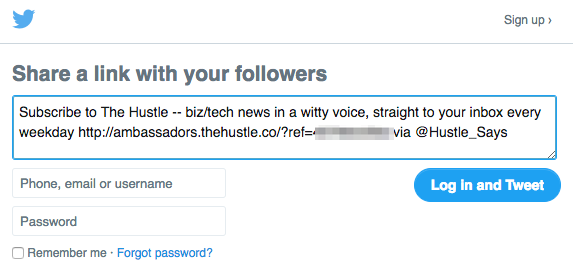
If she decides to go for email, she can send the message at a snap – connect her address book to import friends’ emails and just hit click:
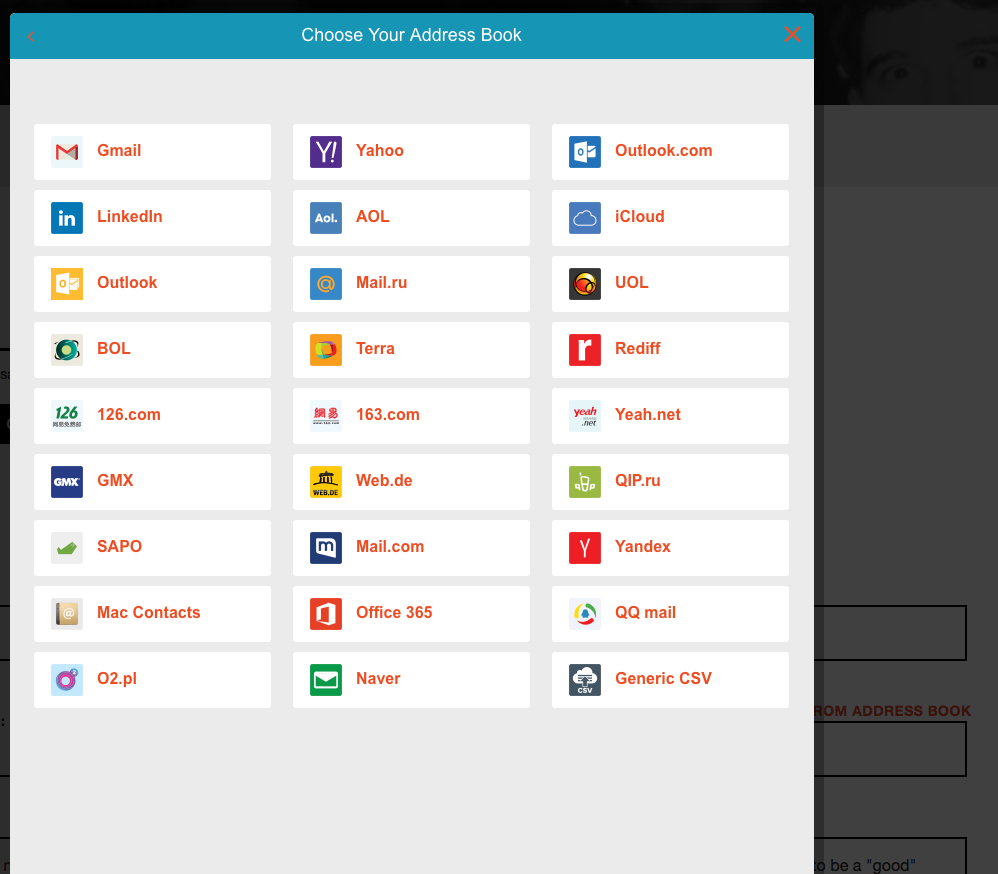
(This is also how CloudSponge helps improve this process – providing a seamless experience where users don’t have to type anything to send email invitations.)
Note that the company also prepopulated the email message, removing the friction of having to write an email that would convince someone to click.

Once she sends the referral-invite, her direct involvement in the process ends.
It’s all up to the invitee now.
Step 4. A person she’s invited receives the invitation email.

Providing it captured their attention, they open it, discovering the main body message aiming to convince them to sign up too.

Step 5. They act on the referral and go to the signup screen.
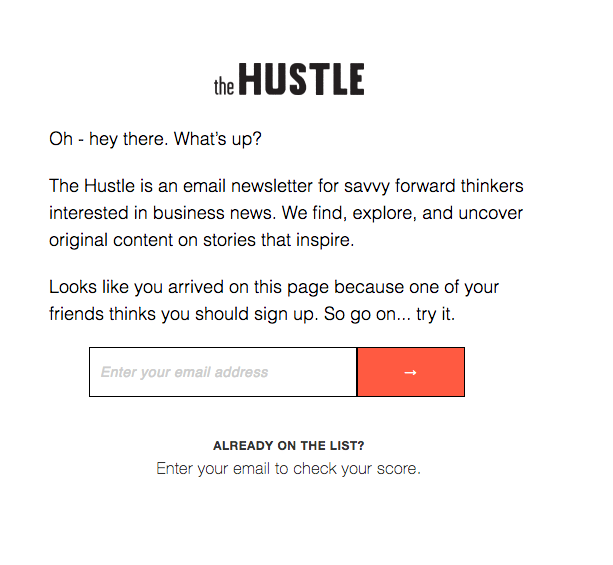
From then on, your onboarding process takes over, aiming to convert the person into a user.
In a nutshell, the above process looks like this:
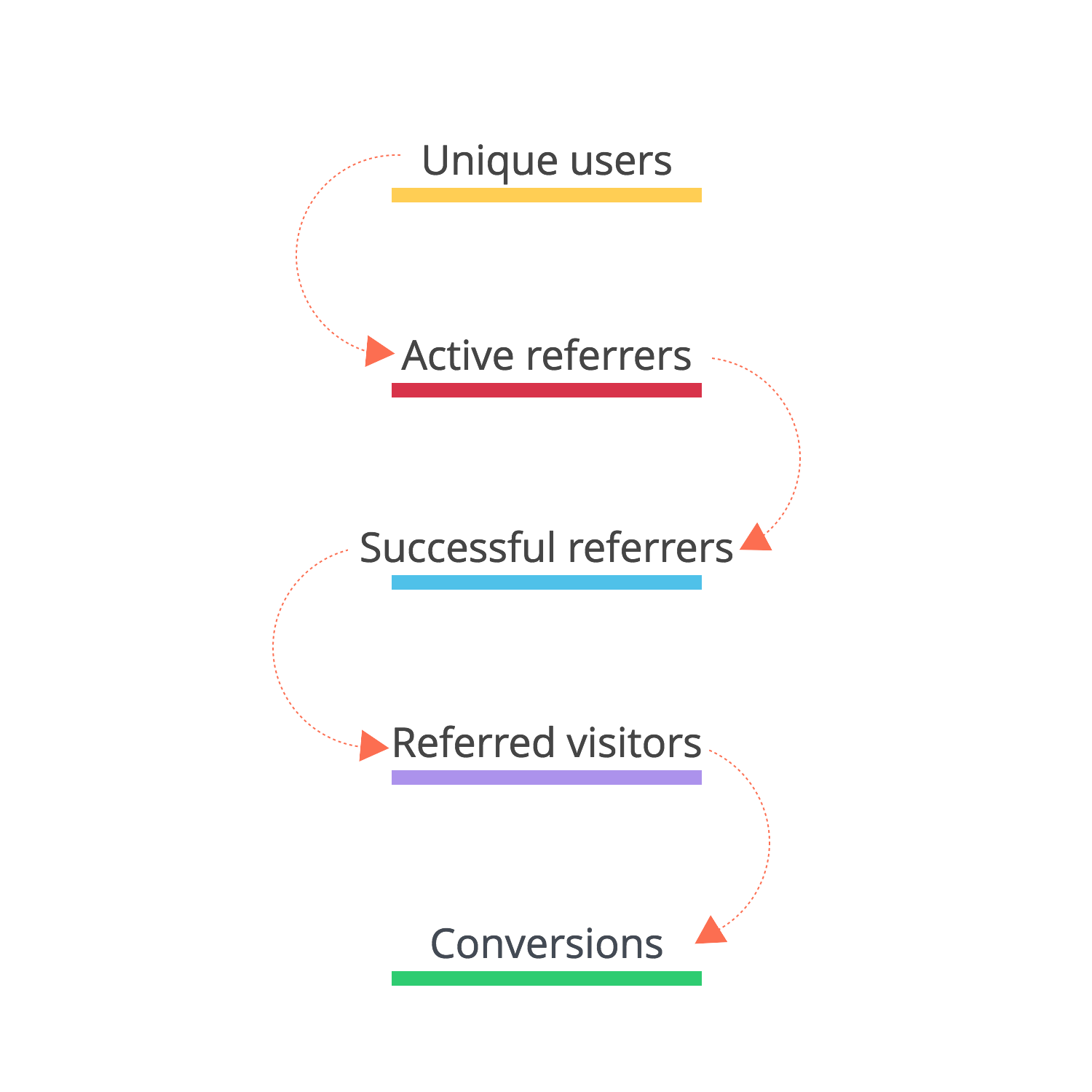
It starts with engaged users, some of whom get intrigued by your program and act on it, sending referral-invites to their connections.
Invitees, engaged with the message visit the company’s site, and providing the see the value of signing up, do so.
Convinced?
If so, let’s discuss factors that can make or break your program:
4 Most Crucial Factors Affecting Referral-Invite Program’s Success
The success of your program depends on four things:
- Visibility – how easy it is for current users to discover and learn about it.
- Ease of Use – how much work do they need to do to avail of it.
- Engagement – how well you’ve optimized the sharing messages, and finally,
- Rewards – what the referring person’s going to get for helping to grow your userbase.
Before we go through them in turn, let me clarify something – the below is just an introduction to each section. However, we’ve published or plan to write more detailed guides to each of those factors. And so, where applicable, you’ll find links to our other resources where you could learn more.
1. Visibility
I’ve already shared this statistic in my previous post on refer-a-friend strategy. However, it’s so shocking that it’s worth to reiterate:
“83% of people are willing to tell others about a product after a positive experience with it. Yet only 29% of them actually do it.”
Do you know why that is? Because the rest doesn’t know about a company’s referral program!
Then again, how can this be any different since so many organizations make it difficult for users to learn about it? They bury the referral link deep in the interface or place it where no user has ever ventured.
And most never ask their customers for help with growth.
In other words, they do opposite to what such program entails – making it bluntly obvious that a company would like their users to talk about it.
Luckily, many organizations do get that. For example:

Where to learn more: Our guide on how to optimize a refer-a-friend program to get more of your users talking about your product.
2. Ease of Use
I guess this goes without saying – the harder you make for users to refer you, the less likely they’ll be to do it.
Simply.
And this goes to every aspect of the program, from how easy it is to find it to the number of steps a person needs to take to send a referral.
As Jay, CloudSponge’s CEO points about optimizing a referral program:
“Don’t make your users type anything, especially things they have to go look up.”
For example, if you want users to email their friends about you, don’t rely on them remembering (or, heaven forbid, being willing to copy and paste) their email addresses into the app.
Instead, make it easy to import emails directly from their address book. Like this:
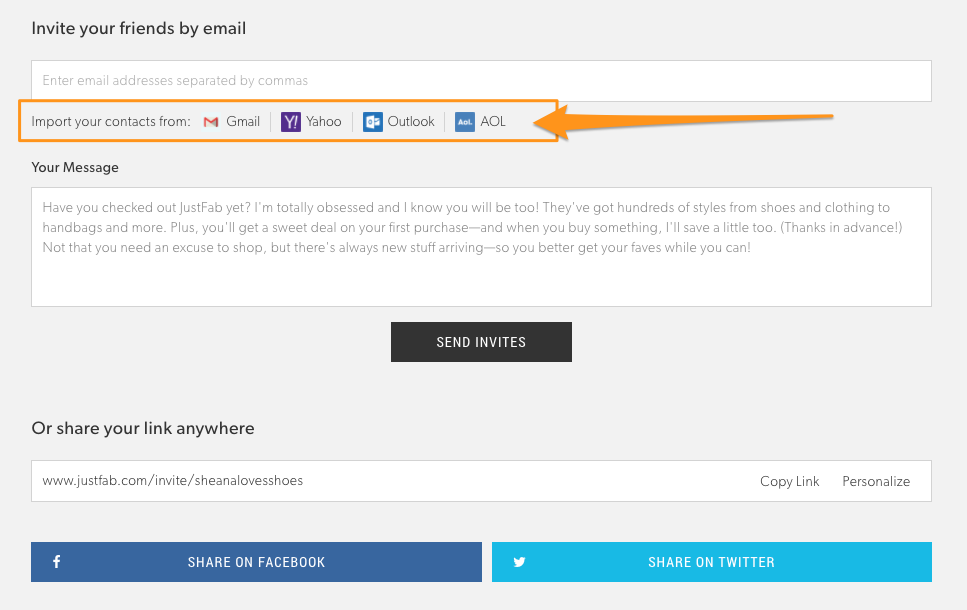
(Note, CloudSponge offers the ability to embed address book import into your product. Find out more here.)
3. Engagement
The third element relates to how you or your users convince others to check out your product.
And typically, this happens in one of the two ways:
- A company pre-writes sharing messages – social media updates and email copy – ensuring that they are optimized to generate the highest engagement, or
- They leave it up to the user.
Now, guess which one guarantees better results?
Now, I admit, if your audience consists of professional copywriters then the second option would undoubtedly work best. But in the majority of other markets, relying on a user to write an email that’s going to compel someone else to action is risky.
Unfortunately, that’s the route many organizations choose. Just consider this sharing message:
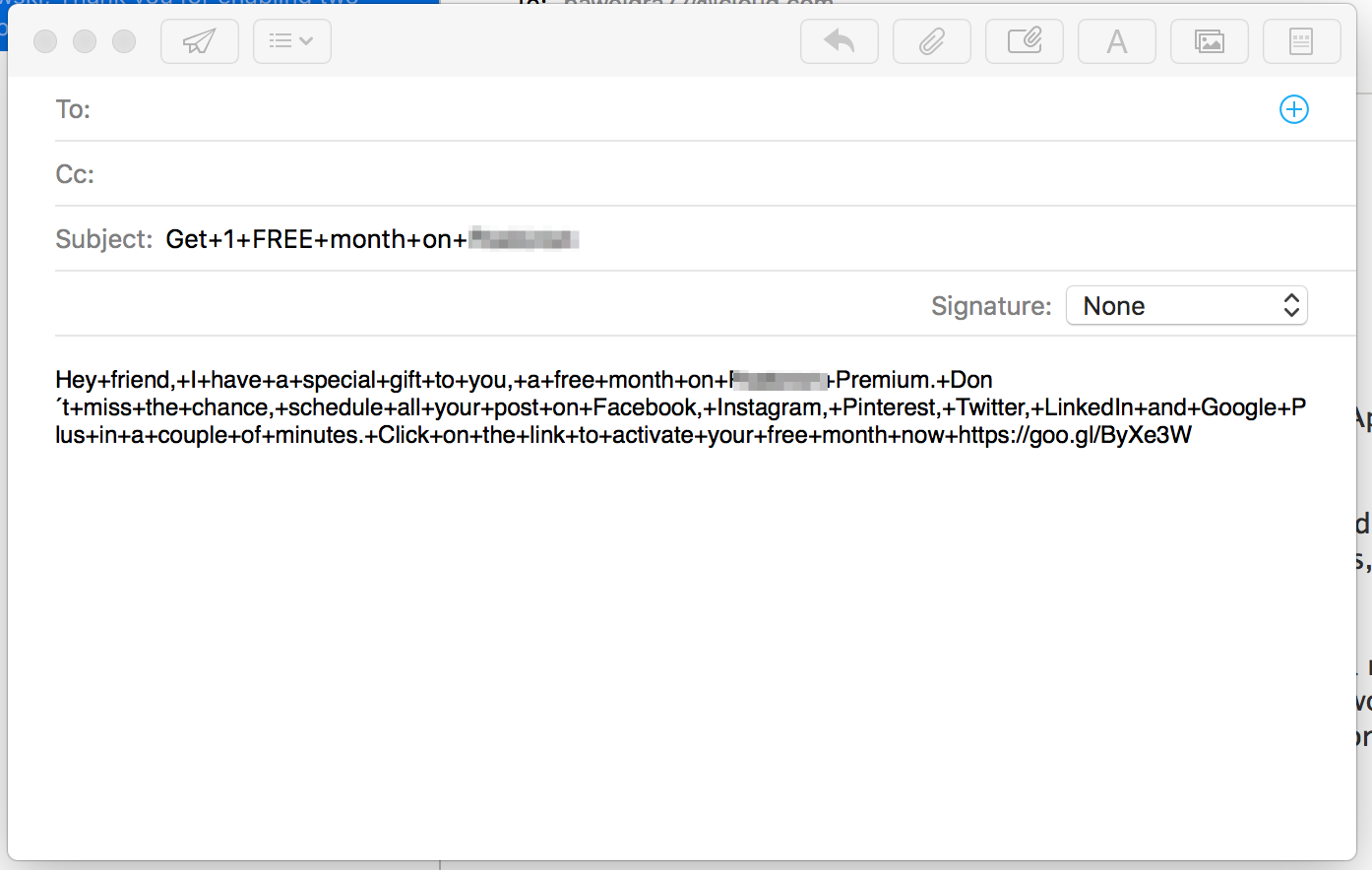
Not sure about you but I’d strongly doubt that it could convince anyone to sign up.
And yes, this is an actual sharing message that shows up in your email client after you click on the company’s referral program here:
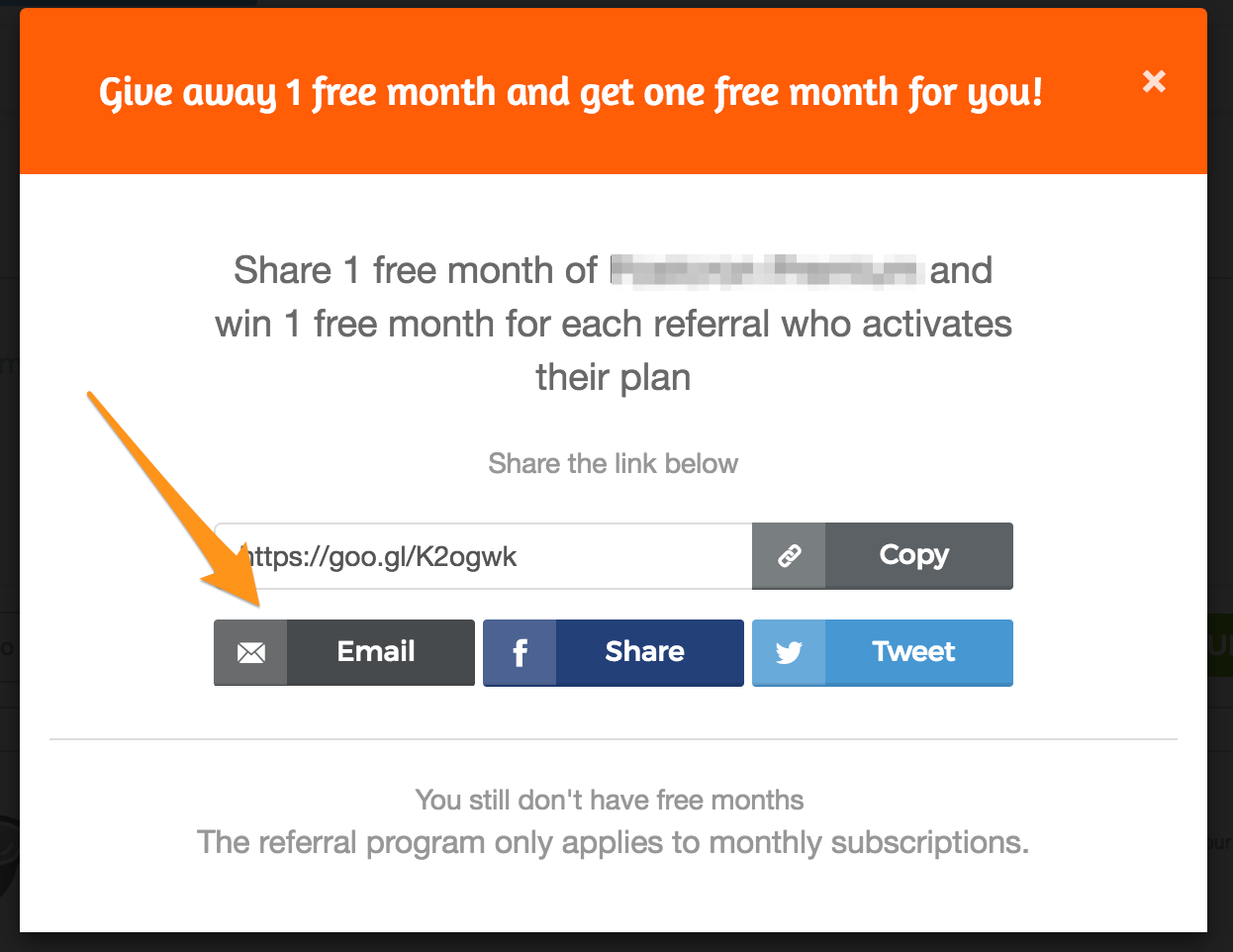
Where to learn more: Our complete guide to writing compelling sharing messages to help you optimize yours for the highest engagement.
4. Rewards
The most engaged users – those who absolutely love your product and can’t see going through the day without it – will refer it on their own.
The rest, however, might need some incentive to do so.
After all, recommending or inviting a person to use a product requires putting own credibility on the line. For one, what the invitee thinks about the product often affects what he or she feels about the referrer.
I admit – this isn’t a great risk, at least not in the case of a majority of products.
Nonetheless, it’s one you may need to minimize with an appropriate reward.
In case of referral programs, such rewards typically fall into two categories:
- The ability to use premium or high-level features for free, or
- Actual payment, as it is with many affiliate programs.
SEMrush, for example, offers the latter through their affiliate platform:

Evernote offers points that can go towards a referrer’s premium plan
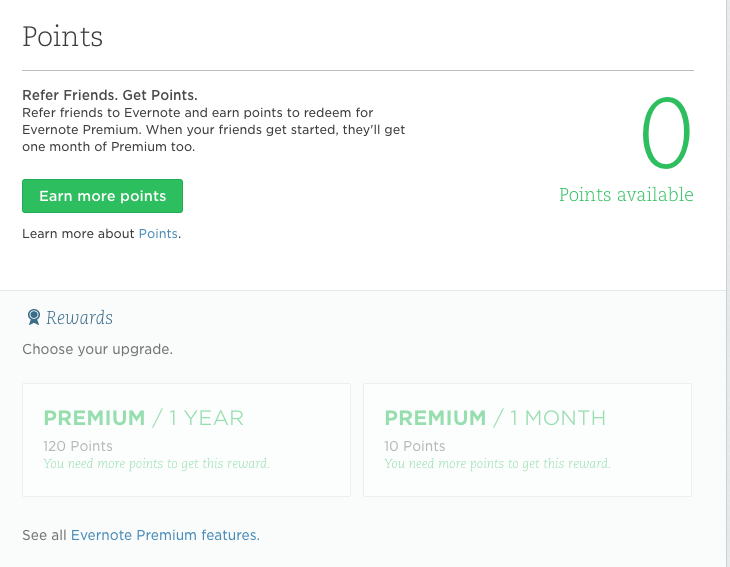
Closing Thoughts
A strong referral-invite program helps boost growth and does do at a fraction of what utilizing other marketing channels would cost to do the same. But launching it isn’t as simple as just putting a refer-a-friend link somewhere in the app.
After reading this post, you know how a referral program works and what are the most important factors that affect its performance.
Review and Audit Your Sharing Process
Download our Better Sharing Workbook Now
(it's quick, easy and absolutely free!)

